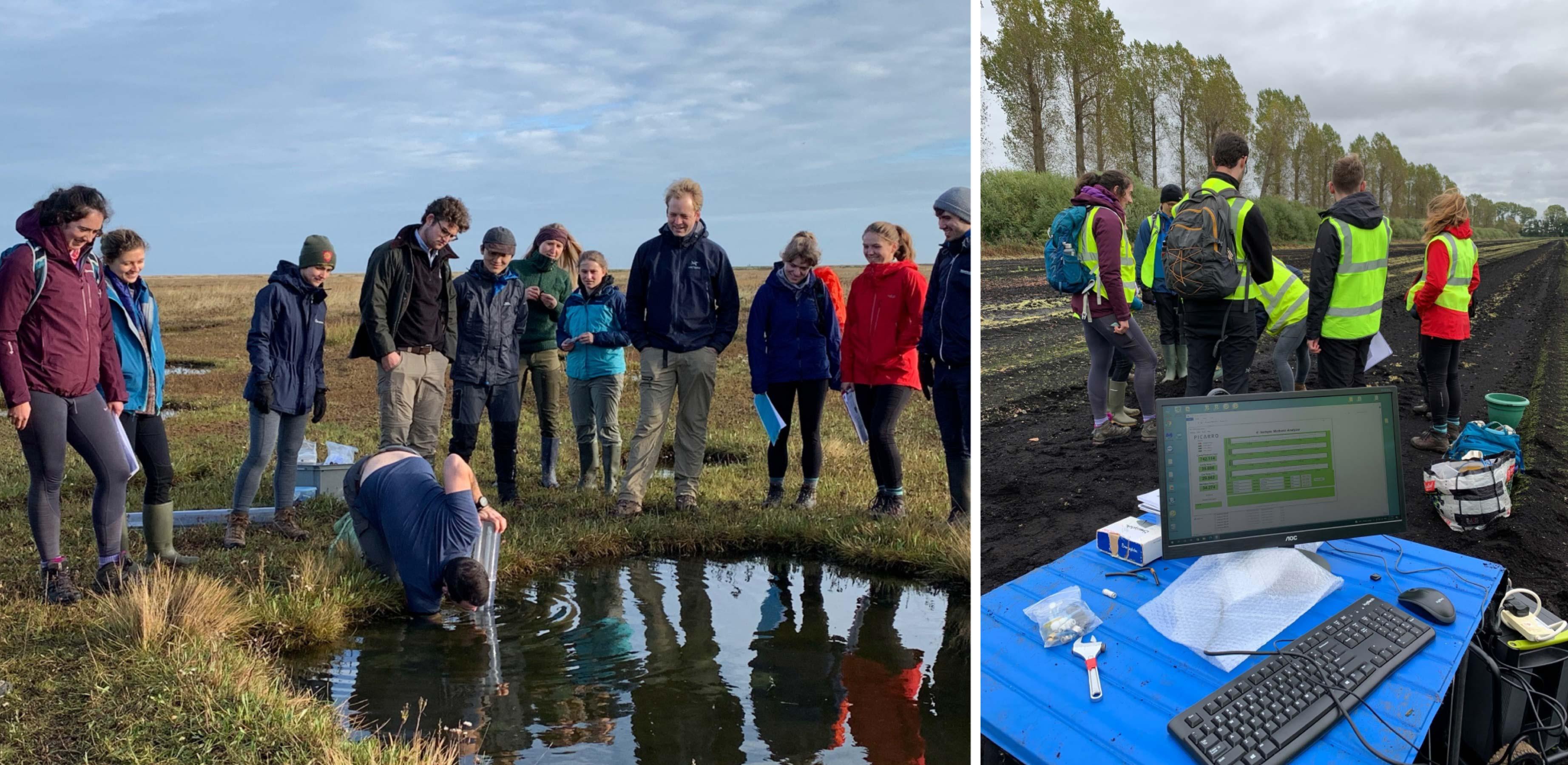
Submitted by Dr C.M. Martin-Jones on Mon, 23/05/2022 - 12:46
A new Cambridge-based project, led by earth scientist Dr Sasha Turchyn, will create a dedicated hub for research into greenhouse gases related to natural and human-induced climate change.
Turchyn was awarded a NERC Capital Grant for the LASER-ENVI project, which will use lab-based and field-deployable laser spectrometers to measure gases including carbon dioxide, methane, sulphur dioxide and water vapour and understand how they move in the environment.
Through studying how these gases flow across Earth’s surface, Turchyn hopes to explore specific environmental questions including how carbon and methane are locked away in vegetated coastal ecosystems and released via human activities such as farming.
The UK has the potential to be at the forefront of this technology, said Turchyn, “Although there are individual laser spectrometers at Universities throughout the UK, there is no national facility that can measure the full range of concentrations and isotopes of climatologically relevant gases across the diverse range of environments and natural abundances.”
The project includes collaborators from across Cambridge, including the British Antarctic Survey, the Yusuf Hamied Department of Chemistry and Department of Geography.
Our planet is habitable because of the particular mixture and pressure of these gases within its atmosphere. That mix is kept in check by a range of processes across Earth’s surface that consume and produce them, a balance upon which life depends. But atmospheric concentrations of greenhouse gases including carbon dioxide and methane are increasing dramatically, causing anthropogenic warming.
Tracing the sources and movements of the gases which regulate our climate system across Earth's surface will help understand how our planet functions under increasing stress and may help with predicting how these greenhouse gases could change under future rising temperature and sea level.
One of the project’s laser spectrometers has already been used to measure methane in agricultural land and salt marshes in Norfolk (see feature image). The research will also investigate other important Earth system processes, including the flux and composition of water vapour and carbon dioxide gases from volcanoes, information that can be used in eruption forecasting and monitoring: potentially saving lives and livelihoods.
Project members from Cambridge’s Department of Earth Sciences include Professor Marie Edmonds, who studies volcanic gas emissions, and Dr Rachael Rhodes, who will be using one of the new laser spectrometers to analyse ice cores for information on ancient atmospheric gases.
“The new laser-ENVI lab will allow measurements of the carbon isotopic composition of volcanic gases, an area critical to understanding Earth’s carbon cycle and for forecasting volcanic eruptions,” said Edmonds, “We are particularly excited that this facility will allow analysis of samples collected via unoccupied aerial vehicles (drones) at active volcanoes.”
Dr Rachael Rhodes, who also collaborates with scientists at the British Antarctic Survey, said, “The high resolution of this measurement technique will be critical for upcoming projects focused on very deep, old ice from central Antarctica where thousands of years of record is condensed into tens of metres of ice.”
Developments in laser spectrometry over the last decade now mean the equipment is portable; measurements are no longer confined to the lab and so the isotopic content of gases can be profiled at different stages of their lifecycle in the environment. “One of the most powerful tools for tracing the various sources and sinks of gas to the atmosphere is the measurement of the stable isotopic composition of gases,” explains Turchyn.
This flexibility will enable a range of scientific questions to be tackled in one place: combining techniques and expertise from across environmental science disciplines. “The fact that we can take this instrument from lab to field opens up a lot of exciting opportunities for teaching and being able to a range of environmental questions in varied settings.”
